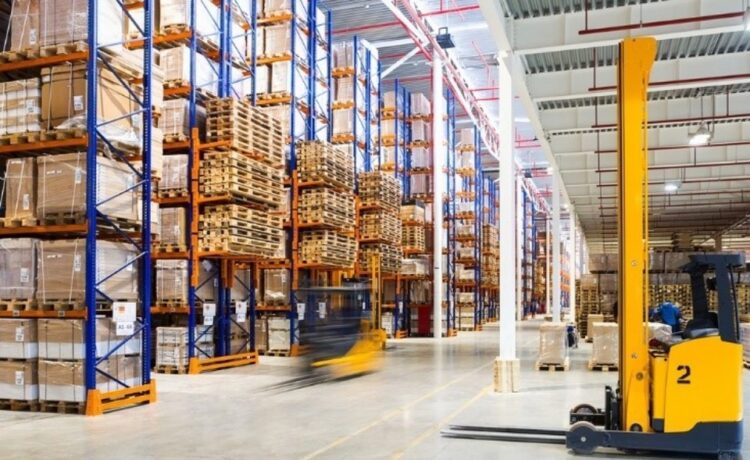NTL Storage has witnessed countless Singapore business owners standing in their warehouses, surveying spaces that have become too small for their ambitions, calculating the crushing costs of relocation and wondering if they can survive the move. These are not abstract business problems debated in boardrooms. These are real crises faced by real people whose livelihoods depend on finding space for growing inventory, whose employees depend on the business staying afloat, whose families depend on decisions made in moments of spatial desperation. The mathematics of warehouse relocation in Singapore are brutal: six-figure moving costs, operational disruptions lasting weeks, lease penalties, lost business during transition, and the perpetual uncertainty of whether the new space will prove adequate. But there exists another path, one that NTL Storage has helped hundreds of businesses discover over two decades.
The Relocation Trap
Walk through any of Singapore’s industrial estates and you will find business owners trapped in an impossible equation. Their operations have grown. Their inventory has expanded. Their warehouse, once spacious, now bursts at the seams. The conventional wisdom says move to a larger facility. The conventional wisdom is expensive and often wrong.
Consider what relocation actually costs:
- Moving expenses ranging from $150,000 to $400,000 depending on inventory volume
- Lease termination penalties averaging three to six months of rent
- Operational downtime costing thousands in lost revenue daily
- New facility deposits requiring substantial capital outlay
- Higher monthly rents in perpetuity for larger spaces
- Staff retraining and potential turnover from location changes
- Lost customers during transition period
For a business operating on modest margins, these costs represent existential threats. Some companies never recover from relocation expenses. Others limp along for years trying to recoup the investment, only to discover they are outgrowing the new space as well.
The Vertical Solution
What most warehouse operators fail to recognise is that they are not actually short of space. They are short of properly utilised space. Their facilities contain thousands of cubic feet of unused capacity floating above their heads, ignored and wasted. NTL Storage specialises in transforming this dead air into productive storage volume.
The typical Singapore warehouse features ceiling heights between 8 and 12 metres. Most operations use only the bottom 5 to 6 metres. The upper 40 to 50 percent exists solely to house expensive climate control. It is real estate you pay for monthly but never use. Imagine renting a three-storey shophouse but only opening the ground floor for business. That is precisely what happens in thousands of Singapore warehouses every day.
Mezzanine Systems: Adding Floors Without Building
NTL Storage’s most dramatic intervention involves mezzanine installations, essentially constructing additional floors within existing warehouse volumes. This is not merely adding taller shelving. This is creating entirely new operational levels, complete with flooring, safety railings, and access systems.
The transformation proves remarkable:
- A 10,000 square foot warehouse becomes 18,000 square feet of usable space
- Storage capacity increases by 80 to 100 percent
- Installation completes in weeks, not months
- Costs average one-quarter of relocation expenses
- No operational downtime required
- Existing lease and location maintained
A distributor in Woodlands faced exactly this dilemma. Growing rapidly, they needed space urgently. Relocation quotes exceeded $300,000. NTL Storage installed a mezzanine system for $75,000, doubling their effective capacity within three weeks. The business continued operating throughout installation. They are still there today, thriving in a facility they once thought they had outgrown.
High-Density Racking: Rethinking Storage Architecture
Not every warehouse suits mezzanine installation. Ceiling heights, floor load capacities, or operational workflows sometimes preclude adding levels. For these situations, NTL Storage employs high-density racking systems that fundamentally reimagine how inventory occupies space.
Drive-in racking, push-back systems, and mobile racking configurations eliminate wasted aisle space, compressing storage into dramatically smaller footprints. A facility storing 1,000 pallets in conventional selective racking might accommodate 2,000 pallets with properly engineered high-density systems, effectively doubling capacity within the same four walls.
The key lies in understanding inventory characteristics:
- How frequently items require access
- Whether strict first-in-first-out rotation is necessary
- Product dimensions and weight specifications
- Seasonal variation patterns
- Material handling equipment capabilities
NTL Storage conducts comprehensive operational analysis before recommending systems, ensuring solutions match actual requirements rather than imposing generic templates.
Very Narrow Aisle Configurations
Another pathway to doubled capacity involves reconsidering aisle width. Conventional warehouse design allocates 3 to 3.5 metres for forklifts to navigate between racking. Very narrow aisle systems reduce this to 1.6 to 1.8 metres through specialised equipment. The reclaimed space accommodates additional racking bays.
For large facilities, the mathematics prove compelling. A 20,000 square foot warehouse might dedicate 8,000 square feet to aisles. Narrowing aisles appropriately recovers 3,000 to 4,000 square feet for storage, a 25 to 33 percent capacity increase achieved through intelligent layout rather than physical expansion.
The Human Dimension
Behind every warehouse capacity crisis stands a business owner losing sleep, employees anxious about stability, families depending on paycheques that become uncertain when businesses struggle. NTL Storage’s work over twenty years has touched hundreds of these human stories, helping businesses survive and thrive without the devastating disruption of relocation.
Their approach recognises that warehouses are not abstract spaces but working environments where real people spend their days. Solutions must account not only for storage density but for safety, accessibility, and operational flow. Systems must work not just on paper but in the daily reality of inventory movement, order fulfilment, and the dozen unpredictable challenges that arise in actual operations.
The Choice
The difference between businesses that survive growth challenges and those that stumble often comes down to finding the right partners at critical moments. NTL Storage brings two decades of experience helping Singapore businesses double capacity without the trauma of relocation. Their track record speaks through hundreds of installations across every industrial sector, through businesses that are still operating successfully in facilities they once thought too small.
For warehouse operators facing capacity crises, alternatives exist. Solutions are available. Click here.






